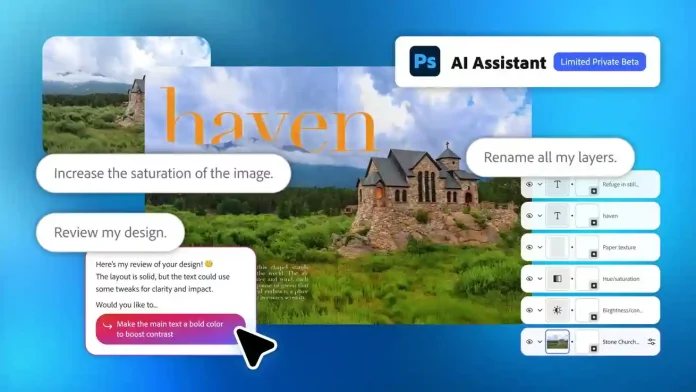Adobe is broadening its generative AI capabilities across Firefly, Creative Cloud, and enterprise platforms, unveiling a lineup of updates designed for faster, more integrated creative workflows. The latest announcements were revealed at Adobe MAX 2025, where the company highlighted innovations in AI-assisted content creation for video, audio, and design.
Firefly Evolves for End-to-End Production
Firefly now extends beyond still imagery into complete video and audio production. The new Generate Soundtrack feature, available in public beta, employs Adobe’s Firefly Audio Model to create original, royalty-cleared instrumental music that automatically syncs with video footage. Complementing this, Generate Speech—also in public beta—converts text into realistic voiceovers in multiple languages, with adjustable tone and pacing for lifelike narration.
A web-based multitrack video editor, currently in private beta, allows users to cut, mix, and enhance clips directly in the browser. The tool includes integrated options for adding titles, soundtracks, and voiceovers, streamlining the production process.
Leveraging Firefly Image Model 5, Prompt to Edit enables creators to modify images using natural language commands for precise, context-aware adjustments. Meanwhile, Firefly Boards introduces collaborative brainstorming tools that transform ideas into visual storyboards. A new Rotate Object function can even generate 3D perspectives from 2D imagery, accelerating concept development.
Creative Cloud Gains New AI Power
Adobe’s flagship Creative Cloud applications are also receiving major AI-driven upgrades. The company is integrating Firefly and partner models directly into Photoshop, Lightroom, and Premiere Pro to enhance speed, accuracy, and creative control.
In Photoshop, the Generative Fill feature now supports third-party models such as Black Forest Labs’ FLUX.1 Kontext and Google’s Gemini 2.5 Flash, resulting in more photorealistic compositing with consistent lighting and texture details.
Premiere Pro’s AI Object Mask (public beta) can detect and isolate people or objects automatically, enabling faster color grading, focus shifts, and visual effects. Lightroom’s Assisted Culling uses AI to identify sharp, well-composed images, helping photographers efficiently manage large collections.
Partnership with YouTube for Shorts Creation
Adobe has also partnered with YouTube to bring Premiere Pro’s short-form video tools to creators. A new feature, Create for YouTube Shorts, will debut within the Premiere mobile app, offering templates, transitions, and effects optimized for vertical video. The integration will soon be accessible directly from YouTube, streamlining the content creation process for short-form producers.
Enterprise-Scale AI and Model Training
For businesses, the GenStudio platform now supports advanced AI tools designed for large-scale, brand-coherent content creation. Firefly Foundry empowers enterprises to train proprietary AI models using internal datasets to ensure on-brand, secure outputs.
Adobe is further expanding model access through partnerships with Google, OpenAI, Runway, ElevenLabs, and Topaz Labs. The new Firefly Custom Models (private beta) let teams generate images in their unique visual language for consistent branding across campaigns.
Conversational AI Assistance and Project Moonlight
Adobe is also reimagining creative collaboration through conversational AI. Integrated assistants across its ecosystem allow users to complete complex tasks using natural language prompts while maintaining direct creative oversight.
In Adobe Express, an AI Assistant (public beta) can guide users from concept to finished design in minutes. A private beta of Photoshop for the web also introduces a similar assistant geared toward automating repetitive edits while preserving artistic intent.
Finally, Project Moonlight, a private beta within Firefly, uses social and creative insights to brainstorm fresh ideas and manage AI assistants across Adobe’s suite. The company also previewed early integrations between Adobe Express and platforms like ChatGPT, hinting at a more interconnected future for digital creativity.




